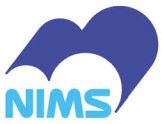From iPad to iPaper

(firmenpresse) - Tsukuba, Japan, Sept 4, 2017 - (ACN Newswire) - Imagine folding up a paper-thin computer tablet like a newspaper. It sounds like something out of a science fiction movie, but such flexible electronics are moving closer to reality, according to a review in the journal Science and Technology of Advanced Materials.
Paper that is transparent and conducts electricity could have widespread applications, including foldable computers, transparent touch screens, and even digital camouflage clothing.
"With widespread and intensive efforts, low-cost and light-weight 'green' electronics fabricated on transparent nano paper substrate will provide new technologies impacting our daily life," state the review paper authors from Nanyang Technological University in Singapore.
Cellulose, the building block of paper taken from plants, is an exciting alternative to the plastic, glass and silicon that currently make up most electronic devices, including computers and mobile phones. Cellulose is renewable, biodegradable, strong, and lightweight. For the past 30 years, scientists have considered ways to combine these properties with electronics. Significant progress has been made in the past decade to manipulate the smallest plant fibers, called "nanocellulose", for use in electronics.
For example, researchers at Nanyang Technological University have made "nanopaper" out of nanocellulose and silver nanowires. It still conducted electricity after being folded in half 500 times. Some nanopapers have reached 90% transparency, while others are in the 80% range, similar to plastic. But, better than plastic, nanopapers degrade quickly. After metal electrodes are removed, nanopaper can be buried in soil and will fully degrade within a month. Researchers are still working on how to treat nanopapers that contain non-biodegradable materials, such as epoxy, to maintain their recyclability.
Many challenges remain before nanocellulose electronics become widespread. Currently, it is more expensive to produce pure nanopaper than glass or plastic. Cheaper preparation and fabrication methods are needed. Ideally, a common high-speed printing process used in electronic manufacturing called "roll to roll" can be adapted for nanocellulose. Also, the hydrophilic properties of cellulose make the items easy to degrade; this is desirable when it is time to dispose of them, but not during their operational life. The authors are optimistic that if these issues can be addressed, a wide range of electronics could soon be built from plants.
Article information:
Shaohui Li and Pooi See Lee
"Development and applications of transparent conductive nanocellulose paper"
Science and Technology of Advanced Materials, 2017; 18:1, 620-633.
http://dx.doi.org/10.1080/14686996.2017.1364976
For further information please contact:
Pooi See Lee,
School of Materials Science and Engineering, Nanyang Technological University, Singapore
pslee(at)ntu.edu.sg
Journal information
Science and Technology of Advanced Materials (STAM), http://www.tandfonline.com/stam is an international open access journal in materials science. The journal covers a broad spectrum of topics, including synthesis, processing, theoretical analysis and experimental characterization of materials. Emphasis is placed on the interdisciplinary nature of materials science and on issues at the forefront of the field, such as energy and environmental issues, as well as medical and bioengineering applications.
For more information about STAM please contact
Mikiko Tanifuji
Publishing Director
Science and Technology of Advanced Materials
Tanifuji.Mikiko(at)nims.go.jp
Press release distributed by ResearchSEA for Science and Technology of Advanced Materials.
Bereitgestellt von Benutzer: acnnewswire
Datum: 03.09.2017 - 14:01 Uhr
Sprache: Deutsch
News-ID 1519545
Anzahl Zeichen: 3959
contact information:
Town:
Tsukuba, Japan
Kategorie:
Research & Development
Typ of Press Release: Kooperation
type of sending: Veröffentlichung
Diese Pressemitteilung wurde bisher 385 mal aufgerufen.
Die Pressemitteilung mit dem Titel:
"From iPad to iPaper"
steht unter der journalistisch-redaktionellen Verantwortung von
Science and Technology of Advanced Materials (Nachricht senden)
Beachten Sie bitte die weiteren Informationen zum Haftungsauschluß (gemäß TMG - TeleMedianGesetz) und dem Datenschutz (gemäß der DSGVO).




